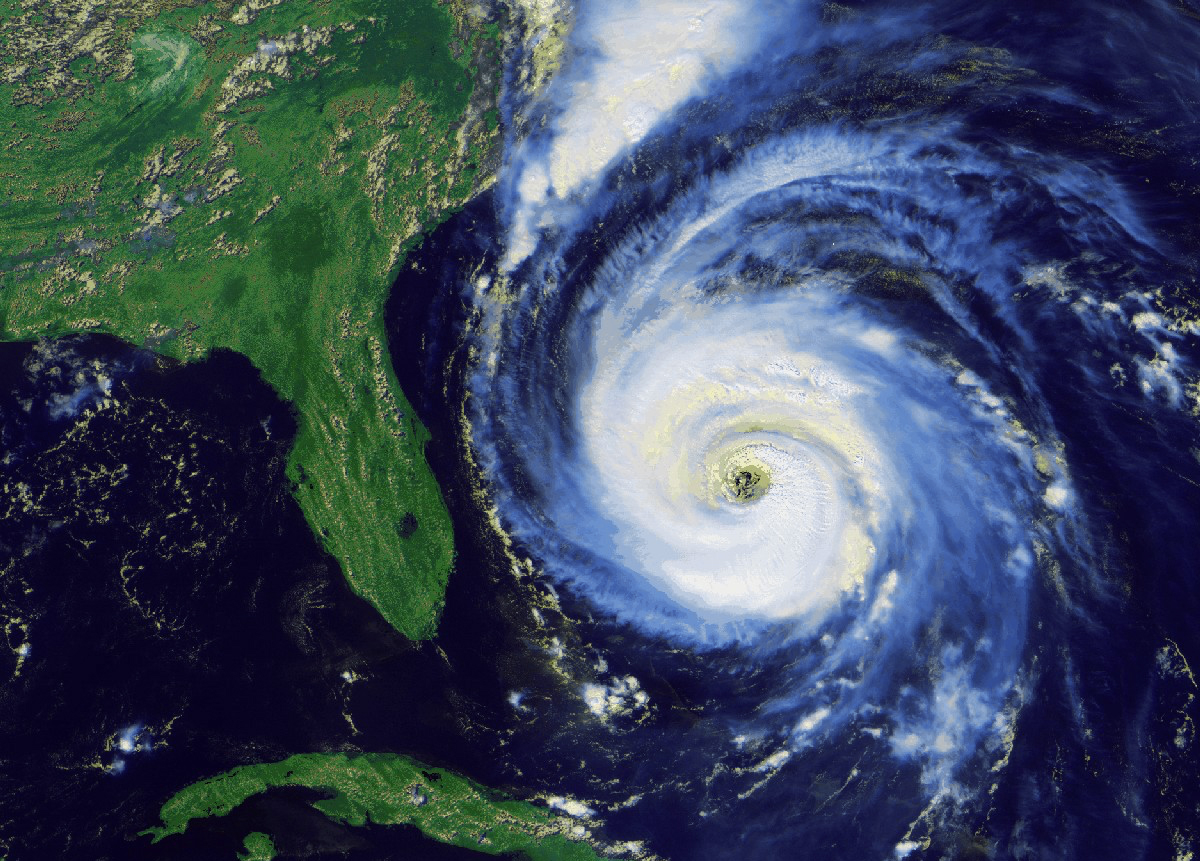How To Prepare Your Pool For A Hurricane
Take time to trim trees and bushes of dead limbs or branches that may become airborne and cause damage to your house, pool equipment or screen enclosure...
Before The Storm
- Take time to trim trees and bushes of dead limbs or branches that may become airborne and cause damage to your house, pool equipment or screen enclosure.
- Patio furniture, toys, canvas awnings, patio umbrellas, grills, telescopic poles, and even some pool equipment can become dangerous projectiles. These can cause severe damage to surrounding property in heavy winds. Remove all possible unsecured items and store them indoors until the threat passes. Do not throw these items into the pool, where chemicals could damage the item and removal is difficult.
- Remove solar blankets and store indoors during periods of heavy wind. Lock the safety straps on portable spa covers or remove and store indoors. Store any steps or benches inside as well.
- If you decide to remove any child safety fencing, do not allow children near the pool after the fence is removed.
- If there is a chance the pool motor or other permanently plumbed electrical equipment could be submerged, shut down power at the breaker panel. Sandbag the area around the equipment if possible. Wrap the exposed equipment in a waterproof covering and tie it securely.
- Do not drain the pool completely. An empty pool is subject to “floating” or “popping” out of the ground due to lift pressure from excessive ground water. If you decide to lower the water level to help prevent overflowing, do not drain past the bottom of the skimmer, as running the pump dry can cause serious damage.
- If you have a gas heater, turn off the gas supply at the valve
- Add extra chlorine and circulate the pool as much as possible before the storm, or add a 4lb. floating chlorinator. This will provide sanitization in case you lose power and cannot run your pump.
- Don’t hesitate to add an extra dose of algaecide to prevent a possible algae bloom.
After The Storm
- Immediately remove branches, mulch and other foreign matter from the pool before you run the pump to prevent clogging the suction lines. If you have to enter your pool to clear debris, make sure you wear shoes to avoid injury to your feet.
- If you lost power during the storm, remember to reset your circuit breakers and pump timer(s) when electricity is restored.
- Remove any covering from the motor or other equipment to allow for airflow. If the pump motor has been submerged, it should be removed for professional cleaning and drying.
- Return the pool water to its proper level. Empty the pump and skimmer baskets and open the appropriate valves to allow water to circulate properly when the pump is turned back on.
- Super-chlorinate the pool and circulate continuously until clarity returns. Clean or backwash filters often, and recharge with new D.E. if applicable. There will be a higher volume of debris and particulate in the water than normal and your filter will need more attention for a few days.
- After any rain, circulate the pool for at least a couple of hours prior to collecting a sample. This will combine the chemically treated water with the rainwater to ensure an accurate sample.
- Repair or replace any screens, doors, fences or gates used to prevent children from entering your pool unattended.
- When your pool is clean and clear, resume normal operation.
So why exactly is your pool green?
When the chlorine in a pool drops below 1 ppm, algae often grows. When algae grows in a pool, it will obviously begin to change color. In order to get rid of the algae, you may need to “shock” your pool.
When the chlorine in a pool drops below 1 ppm, algae often grows. When algae grows in a pool, it will obviously begin to change color. In order to get rid of the algae, you may need to “shock” your pool. In other words, you will need to super-chlorinate the pool because chlorine kills algae. For regular pool upkeep, one lb of hypochlorite granular chlorine (calcium hypo-chloride) for every 10,000 gallons of water is necessary for shocking. During an algae infestation, it is going to take a lot more.
There are three causes of green pool water:
- The first is a lack of chlorine. Without chlorine the pool water will quickly start to grow algae and turn green. Water without chlorine, especially if it has an algae bloom, is unsafe to swim in, and can be a breeding ground for mosquitoes and other insects.
- The second thing that causes pool water to look green (or yellow) is pollen. Pollen gets carried into the pool water by the wind and is too small for the sand filter to remove. As the pollen builds up in the water and settles on the liner, it gives the water a green or yellow look. Despite its unattractive look, pollen is completely harmless and has no ill effects on the yourself or the pool.
- The last cause of green water in pool water is metals, usually copper, that have oxidized. Metals can be introduced through source water, from some cheap algaecides, or, if the water is acidic, from the metal components of the pool, most commonly from copper heater elements. Shocking the pool will oxidize these metals, and, if there are enough metals present in the water, turn the water green. If left untreated, high amounts of metals will stain the finish of the pool. Anyone with blonde hair that swims in a pool with excessive metals will also have their hair turn green.
Call us and we will turn it back to sparkling blue!




